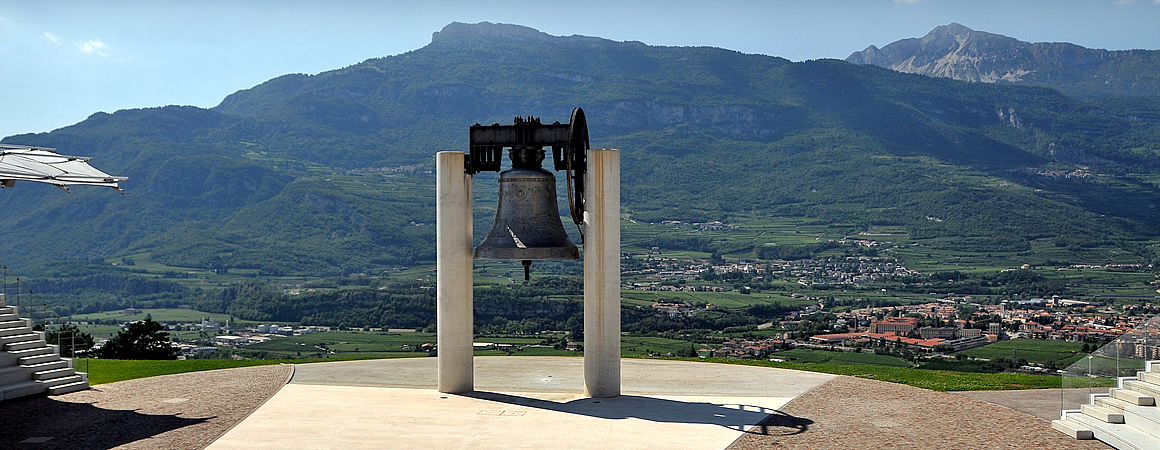On Saturday 30 October 1965, Maria Dolens arrived at St. Peter's Square: splendid, polished, solemn and shining in Rome's autumn sunshine.
It was placed on a suitably prepared cart and positioned between the obelisk and one of Bernini's two fountains. All day it attracted thousands of visitors passing through the square. Furthermore, at that time bishops from all nations were in Rome for the concluding session of the Second Vatican Council; so they were able to admire the Bell in all its splendour. It could not have enjoyed a greater and more universal reception. At eight o'clock on Saturday evening - an unusual time for a private audience but owing to the extra work associated with the Council, the Holy Father Pope Paul VI received the members of the Opera Campana dei Caduti Regency, along with the Archbishop of Trento.
Monsignor Alessandro Maria Gottardi. Also present at the audience were the Rovereto-born minister Giovanni Spagnolli, representing the Italian Government, the mayor of Rovereto Guido Benedetti, the smelter Paolo Capanni, the leaders of the Lions Club and other important figures. In his speech of congratulation, the Pope underlined the fact that the Bell, created to remember the fallen in war, had had to be cast a total of three times in order to become a symbol of peace, and continued by saying that " peace among men is often fragile and precarious; it's not enough to make peace once, it has to be made two or three times, if necessary: so we must generate peace as a virtue that is affirmed and renewed with conscious will, rather than think of enjoying it as a permanent commodity that looks after itself "...The following day - the Feast of Christ the King - citizens of Rovereto who had travelled to Rome in a special train waited at midday in a St Peter's Square packed with thousands of people, for the recital of the Angelus and the blessing of the Holy Father, addressed particularly to Maria Dolens.
Looking out of the window of his study, the Pope saw the great bronze as something truly small, and in his speech he pointed out that the Bell of the Dead was really the Bell of the living, inviting the people to pray:
"that war may cease in the world and that peace may reign among all peoples..."
This was a momentous event in the story of the great bell. Even Giuseppe Saragat, the President of the Republic, sent a message in which he expressed his "wish that the evening ringing of the holy Bronze and the memory of the dramatic events of the war which inspired the meritorious Don Antonio Rossaro may constitute a reminder for all of the need for harmonious and peaceful brotherhood between peoples".
News of the papal blessing was published in all the national newspapers and many international ones, with unexpected prominence. Three days later the Bell returned to Rovereto, but not without having made a kind of pilgrimage the length of the peninsula, during which thousands of people turned out to see it..






